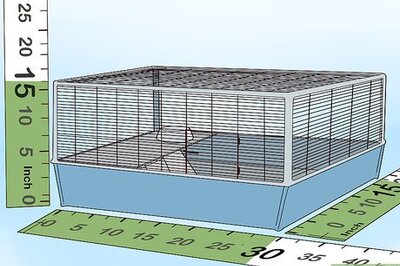
views
Battery Saver Active Error Meaning
Something is wrong with your battery charging system. When your car’s battery is weak or unable to hold a charge, the computer sends the Battery Saver Active message to your dashboard to alert you that there’s a problem somewhere in your battery charging system, meaning your battery or the alternator. When you see this error message, the battery is powering the car on whatever charge it has left.
Your car’s battery saver mode has turned on. When there’s an issue with the battery or alternator, your vehicle’s computer saves power by turning off non-essential electrical systems like the air conditioner, radio, and lights. The purpose of the battery saver mode is to keep the car running for as long as possible, so you won’t be stranded and can get the car to a repair shop.
You can continue to drive but not for long. With the battery saver mode on, your car is trying to keep running for as long as possible. Unfortunately, that might not be for very long. If the alternator is not powering the system or charging the battery, you’ll run out of power quickly. There’s no way to know exactly how long your car will run in battery savor mode. It depends on how much charge is in the battery and how much, if any, power the alternator is supplying. Most cars will stop running within 30 minutes to 1 hour. When you see the Battery Saver Active message, it’s best to get off the road as soon as possible.
Battery Saver Active Light Causes
A problem when the alternator often trips the Battery Saver Active error. The alternator provides the car’s power while it’s running and replaces whatever electricity the battery expended starting the engine. When the alternator isn’t doing its job as well as it should or at all, the battery starts supplying power to the car. When the battery gets low enough, the Battery Saver Active error lights up.
A bad battery causes the Battery Saver Active error to appear. While the Battery Saver Active message doesn’t necessarily mean your battery is bad, it is among the possibilities. Even when there’s a problem with the battery, it doesn’t always mean you need to replace it. The message can signal the terminals are dirty or corroded or there’s a problem with the battery cables or battery sensor.
Fixing a Battery Saver Active Light
Inspect the battery terminals for signs of corrosion. Corrosion is a natural occurrence as your battery ages, but it can also be a sign the battery isn’t charging properly. Look for a crust of white, blue, or green powdery residue on your battery terminals. If you see corrosion, disconnect your car’s battery and [Clean-Corroded-Car-Battery-Terminals|clean the corroded battery terminals] with baking soda. Always wear gloves and safety glasses when cleaning it off the terminals. Battery corrosion is caustic and can damage your skin and eyes.
Test the battery with a voltmeter tool. If there’s no corrosion and the battery isn’t damaged, you can test it with a voltage meter or take it to an automotive store to have it tested. A battery in good condition has a charge between 12.4 and 12.7 volts. If the battery is below 12.4 volts, try charging it with a car battery charger. Replace the battery if it still doesn’t hold a charge after charging it up.
Check the alternator by testing the battery with the car running. Leave the voltmeter attached to the battery and turn the engine on to test the alternator. If you get a reading above 13.2 volts with the car running, the alternator is working. A reading below 13.2 volts means there’s an issue with the alternator or alternator belt.
Check that your alternator belt is turning your alternator. Visually inspect the alternator belt while the car is running to check that it’s on the pulley and turning the alternator. You may be able to fix a belt that has simply slipped off the pulley by turning off the car and fitting the belt around the pulley again. Replace the alternator belt if it’s still on the pulley but looks worn or stretched out. Remove your alternator and take it to a mechanic for further testing if the belt is turning the alternator and doesn’t show signs of wear. Have your car towed if you’re not comfortable removing the alternator.
Replace the battery sensor. If the battery and alternator are both functioning, the problem may be with the battery sensor. The battery sensor is attached to your car’s battery and measures the current. If it fails, your car’s computer thinks there’s a problem with the system. This sensor usually costs around $20 and is a simple replacement depending on the make and model of your vehicle.
If your car won’t start, charge the battery. Check the battery terminals for corrosion and charge the battery, if you’re seeing the Battery Saver Active error and your car won’t start. First, remove any corrosion on the battery terminals. Then, try charging the battery or asking someone to [Jump-Start-a-Car|jumpstart your car]. If you still can’t get the car to start, test the battery with a volt meter, and replace it if necessary.
Reset the error with an OBD-II tool or take your car to a mechanic. After troubleshooting the most common causes for the Battery Saver Active error, check the on-board diagnostic codes with an OBD-II reader if you still haven’t found the problem. The reader shows you the codes for which part of the car malfunctioned. Reset the Battery Saver Active error using an OBD-II tool, but it will come on again if you haven’t resolved. If you don’t have an OBD-II and don’t want to buy or borrow one, take your car to a mechanic. They are also able to read OBD-II codes to diagnose battery charging system malfunctions.




















Comments
0 comment